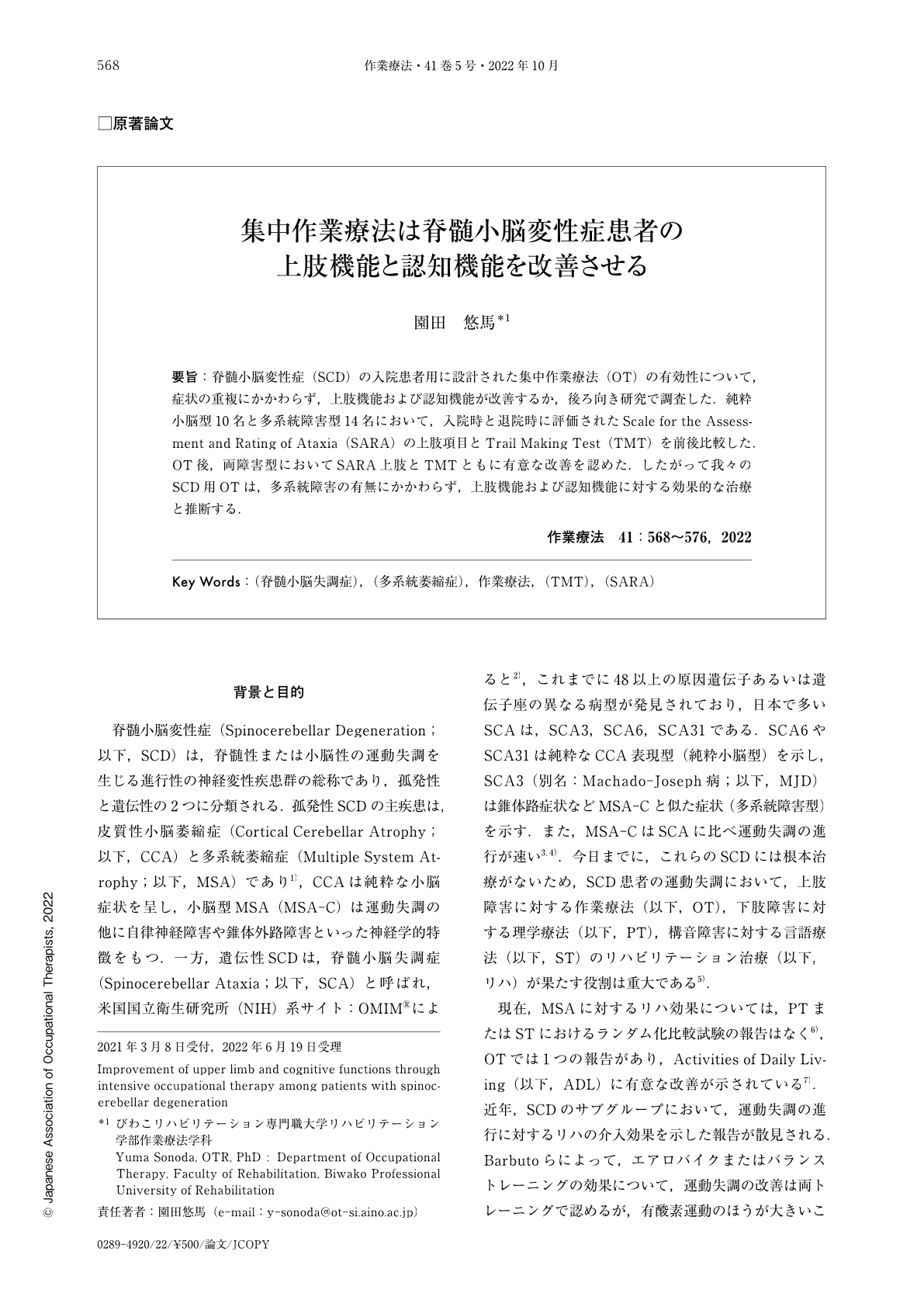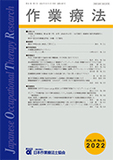Japanese
English
- 販売していません
- Abstract 文献概要
- 1ページ目 Look Inside
- 参考文献 Reference
要旨:脊髄小脳変性症(SCD)の入院患者用に設計された集中作業療法(OT)の有効性について,症状の重複にかかわらず,上肢機能および認知機能が改善するか,後ろ向き研究で調査した.純粋小脳型10名と多系統障害型14名において,入院時と退院時に評価されたScale for the Assessment and Rating of Ataxia(SARA)の上肢項目とTrail Making Test(TMT)を前後比較した.OT後,両障害型においてSARA上肢とTMTともに有意な改善を認めた.したがって我々のSCD用OTは,多系統障害の有無にかかわらず,上肢機能および認知機能に対する効果的な治療と推断する.
The study examines the effectiveness of intensive occupational therapy (OT) in improving upper limb and cognitive function in patients with spinocerebellar degeneration (SCD) with and without multiple-site symptoms. In this retrospective before-after clinical study, we included patients with pure cerebellar ataxia (eight with cortical cerebellar ataxia and two with suspected spinocerebellar ataxia type-6) and polyphyletic disorder (twelve with multiple system atrophy-cerebellar and two with Machado-Joseph disease). The following were evaluated at the time of admission and discharge: (1) upper-limb ataxia based on the Scale for the Assessment and Rating of Ataxia (SARA) and (2) the Trail Making Test (TMT) to evaluate cognitive functions such as attention. The data were analyzed using the Wilcoxon signed-rank test with Holm's method. At the time of discharge, significant improvements in SARA and TMT scores were observed in both groups, indicating that OT improves upper limb ataxia and cognitive function in patients with SCD with or without multiple-site symptoms.

Copyright © 2022, Japanese Association of Occupational Therapists. All rights reserved.


